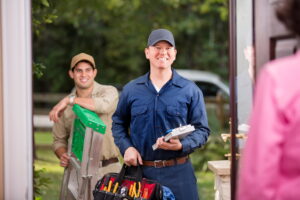Do you have plans to upgrade your heater ahead of the winter season? If so, you may be wondering exactly what happens during a new heater installation. You can keep reading to learn more about the steps that our team completes and why each one is so important to the process.
Then give our team a call when you’re ready to schedule an installation for a new heating system in Boulder. No matter what type of heater you want, we can help with the upgrade.
Taking Out Your Old System
Our first step is to take out your older heater. There are a variety of different types of heating systems, but removal is very similar for all of them. Whether you have a heat pump that offers all-in-one heating and cooling or a gas or electric furnace, we will carefully remove the large indoor system before beginning the installation.
Before we begin, we turn off the electricity and gas lines that lead to your heater for the safety of our team and your home. Getting rid of your older unit is usually a fairly quick part of the installation process. Removing it gives us space to bring in the new indoor unit for the system we are installing.
After removing your old unit, we take some time to clean up the surrounding areas. After having a heater in place for 15 years if not longer, there is inevitably some dust and dirt that have accumulated around the unit. We want to clean up the space for your new heater so it has a fresh, clean start.
Making Upgrades
After your old system is out of the way, we can assess all of the existing connections that lead from your home to connect to your heater. Connections can wear out or corrode with time. Surrounding parts of the walls and floors may be damaged because of leaks or other problems. We can make any necessary repairs and upgrades to the space ahead of bringing in your new unit.
Many times we can repurpose the existing setup if you are exchanging your older heater for a newer version of the same type of system. When you switch from electric to gas or vice versa, we will need to adjust the connections and setup before beginning the actual installation.
Completing the Installation
All of the prep work is complete and it’s officially time to bring in your new heater. We will take our time getting it in place and making all of the appropriate connections. Having your heater installed perfectly on the first day goes a long way toward boosting energy efficiency over the heater’s entire lifespan.
After it’s in place, we have to optimize the setup and begin testing. The time we take to set up and test your new heater is the part of the process that can take the longest. We want to ensure that your home is heated evenly without any issues.
Offering Tips and Tricks
Before we leave, we want to make sure you understand how to work your heater and maximize its efficiency and effectiveness. It’s easy to think you know how to work a heating system and that you don’t need specific instructions.
But each heater is a little different, and modern heaters have come a long way from the heaters that were installed 15-20 years ago. We can talk to you about thermostat settings, maintenance steps, and even share some of the signs that can indicate your heater is having problems. If you notice any of these potentially dangerous signs, give us a call right away. We’re always here to help!
Contact Meyers Heating & Air Conditioning today to schedule an appointment with our professionals.


